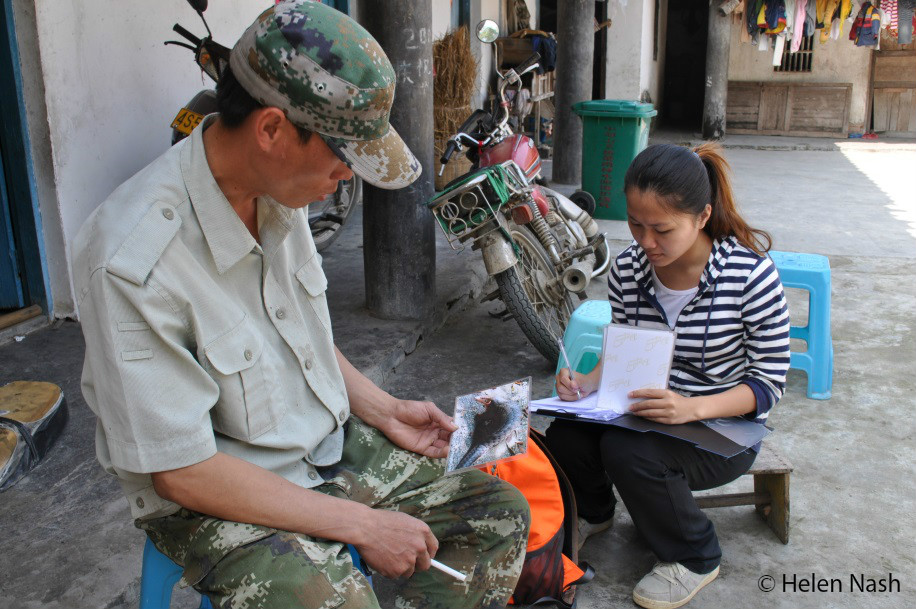Helen Nash, Pangolin Specialist Group Vice Chair for Genetics, has recently published her research on using local ecological knowledge to determine status and threats of the Chinese pangolin in Hainan, China.
Local ecological knowledge (LEK) is increasingly seen as an important source of information for conservation. Furthermore, pangolins are now the most heavily trafficked mammals in illegal wildlife trade, and Chinese pangolins (Manis pentadactyla) are Critically Endangered.
With no recent baseline data available to assess status of pangolin populations in China, we conducted community-based interviews across seven protected areas in Hainan, China, to investigate whether LEK can provide novel insights for pangolin conservation. We found that LEK of pangolins remains high in Hainan: “90% of respondents recognize pangolins and can provide supporting information”. Pangolins are likely to survive in all protected areas that were surveyed, as evidenced by recent sightings dating from 2013 to 2015. However, all populations have declined and are now perceived to be of very low abundance: “only 34% of respondents consider pangolins to remain locally present, and these respondents all regard pangolins as rare”. Illegal hunting continues across this region, with pangolin body parts used locally and sold to outsiders. Pangolins are likely to soon become extirpated across Hainan unless effective conservation management plans can be initiated.

Villagers live beside nature reserve perimeters in Hainan
We have demonstrated that large-scale LEK surveys can strengthen the evidence-base for informing robust conservation action and management plans for pangolins. Moreover, methods to monitor and assess pangolin status and threats are urgently required across all range states. Our results suggest that large-scale systematic LEK surveys can contribute to this goal. LEK surveys can be inexpensive and relatively rapid to conduct over wide geographic areas in comparison to other methods employed to detect pangolins, and can collect data on sightings, population trends and patterns of exploitation through time rather than only providing an assessment of current conditions. Whilst LEK data must be collected and analysed critically using methods such as those we have employed, to try to minimize or control for potential response inaccuracy and/or biases, this first large-scale LEK survey of pangolins in China has produced landscape-level findings of major importance for prioritizing areas for future pangolin conservation. We recommend that further surveys are conducted regionally and internationally to help inform other regional pangolin conservation action plans. Data sharing can be sensitively managed to avoid disclosure of exact pangolin locations. Whilst there is still an urgent need to develop and strengthen conservation management strategies for pangolins, show-casing pangolin survival and promoting conservation of these incredible animals on Hainan remains possible, and would set an important example at a global scale.
Free full-text version of the article available here until April 23, 2016.



